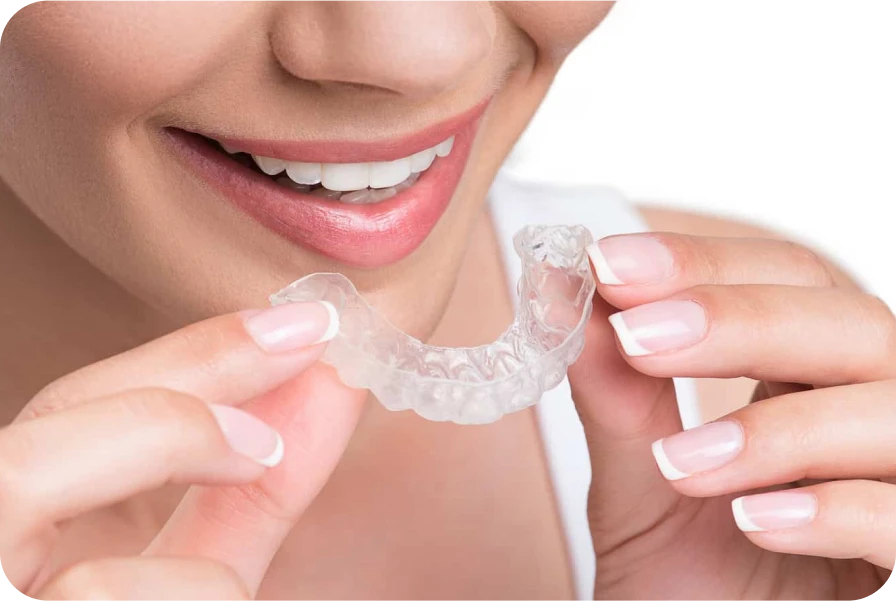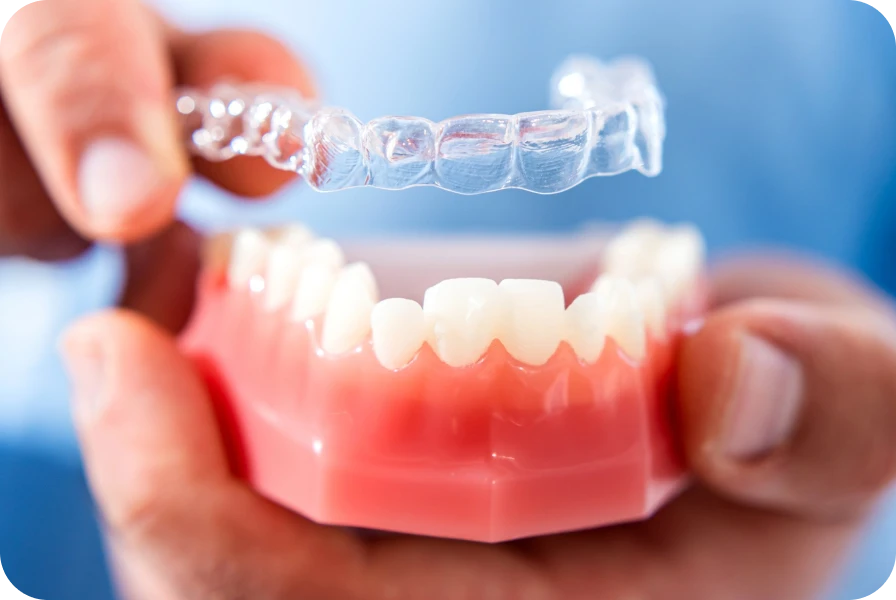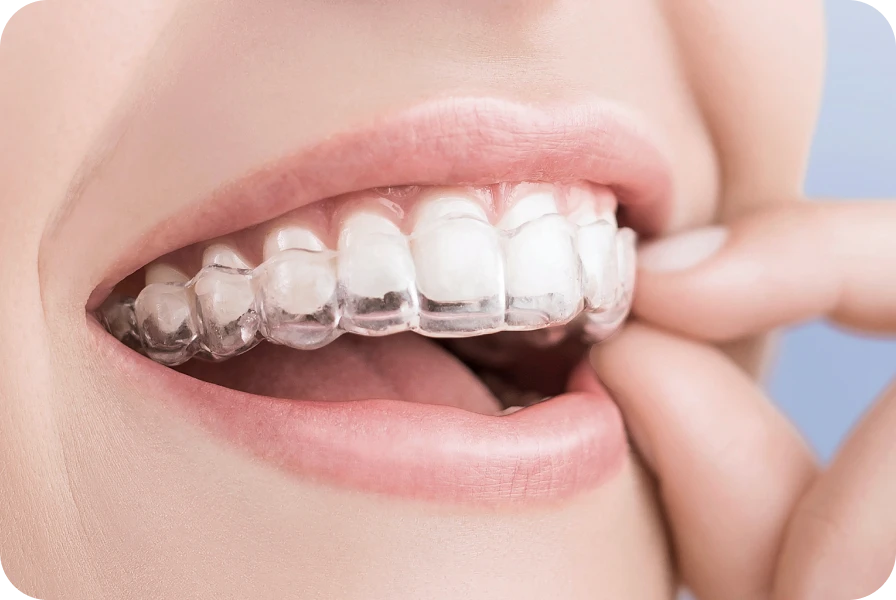Orthodontic Aligner
Orthodontic aligners are transparent devices designed to align teeth. Use them to correct dental malocclusions. They offer an aesthetic alternative to traditional braces. To achieve the best results, wear them according to your orthodontist’s instructions. Generally, you must wear them for at least 22 hours a day. Remove them only for eating or brushing your teeth.
Pay attention to your orthodontist’s instructions. They are designed to suit your specific situation. Do not ignore them. If you do not follow the guidelines, results may be delayed. Each aligner is adjusted to move your teeth gradually. Ensure they are inserted correctly. If they are improperly placed, they may be ineffective. Never force them into place.
Properly Cleaning and Maintaining Orthodontic Aligners

Keeping your aligners clean is essential to prevent infections and bad odors. Clean them daily. Use lukewarm water and a soft toothbrush. Never use hot water, as it could deform your aligners. For a thorough cleaning, use a specific cleaner recommended by your orthodontist. Avoid abrasive toothpastes, as they can scratch the surface of the aligners.
When you remove your aligners, rinse them with cold water to remove saliva residue. Always store them in their case. Do not leave them exposed to the air, as they could become contaminated or lost. If you damage them, contact your orthodontist immediately. Do not attempt to repair them yourself.
Mistakes to Avoid when Wearing Aligners
Do not eat with your aligners in. Food can get trapped, causing cavities or infections. Do not drink sugary or acidic beverages while wearing your aligners, as this can damage your teeth and the aligner material. Remove them before consuming anything other than water. Also, avoid chewing gum, as it can stick to the aligners and deform them.
Remember to reinsert your aligners after each meal. Failure to adhere to this rule can lead to delays in your treatment. Do not skip follow-up appointments, as they are essential for adjusting your treatment and ensuring everything progresses smoothly. If you notice any discomfort or a change in the fit of your aligners, report it immediately.
Adapting to Life with Orthodontic Aligners
Initially, wearing aligners may be uncomfortable. Be patient; your mouth will adapt quickly.
Speak slowly to get used to the sensation. If you experience intense pain, consult your orthodontist. They may adjust your aligners to reduce the discomfort.
Adopt good eating habits. Prioritize foods that are easy to chew. Avoid hard foods that could damage your aligners.
Brush your teeth after each meal before reinserting your aligners. This will prevent the accumulation of bacteria and dental plaque.

The Importance of Regular Follow-Up
Regular visits to your orthodontist are essential. They allow for monitoring the progress of your treatment. At each appointment, your orthodontist will check the fit of your aligners and adjust the treatment plan if necessary. These appointments must not be neglected, as they ensure the smooth progression of your treatment.
If you need to change aligners, follow your orthodontist’s instructions. Never advance to the next step without their approval. Each aligner is designed to move your teeth gradually. Changing too soon could disrupt the process.
Managing Unexpected Situations and Emergencies
If you lose or break an aligner, do not panic. Contact your orthodontist immediately. They will be able to provide you with a replacement aligner. In the meantime, wear your previous aligner to keep your teeth in place. Never leave your teeth without an aligner for an extended period.
In case of irritation or injury in the mouth, rinse with salt water. If the pain persists, consult your orthodontist. They may adjust your aligners or provide you with a soothing gel.
End of Treatment and Retention Phase

Once your treatment is complete, you will need to wear a retainer. This retainer will prevent your teeth from shifting again.
Wear it according to your orthodontist’s instructions. Most often, you will only need to wear it at night. Do not neglect this phase, as it is crucial for maintaining the results achieved.
Continue to clean your retainer just as you cleaned your treatment aligners. It requires the same care.
If you experience discomfort, consult your orthodontist. They may adjust your aligner to improve its comfort.
Maintaining Good Oral Hygiene
Throughout your treatment, oral hygiene is essential. Brush your teeth at least twice a day. Use dental floss to remove food debris between your teeth. Do not allow plaque to accumulate, as it can cause cavities and compromise the success of your treatment.
Use an antiseptic mouthwash to reduce bacteria in your mouth. This will help prevent infections. If you wear your aligners at night, rinse your mouth before reinserting them. This will eliminate bacteria accumulated during the day.
Advantages of Orthodontic Aligners
Orthodontic aligners offer numerous advantages. They are almost invisible, making them aesthetically pleasing. They are also removable, which facilitates teeth cleaning. Unlike fixed braces, they do not have wires or brackets that can irritate the mouth.
Furthermore, aligners are custom-designed for each patient. This ensures a perfect fit and optimal comfort. They also allow you to eat without restrictions, provided you remove them before meals. Finally, they are less likely to cause orthodontic emergencies, such as a detached bracket or a broken wire.
Orthodontic aligners are an effective and discreet solution for aligning your teeth. By following your orthodontist’s recommendations, you will achieve optimal results. Wear them regularly, clean them carefully, and attend all your follow-up appointments. Maintain good oral hygiene and follow the instructions for the retention phase. With a little patience and discipline, you will achieve a perfectly aligned smile.
